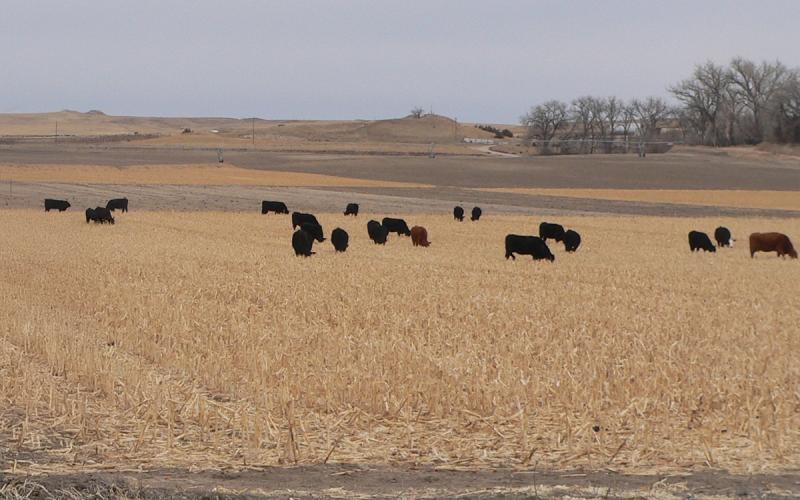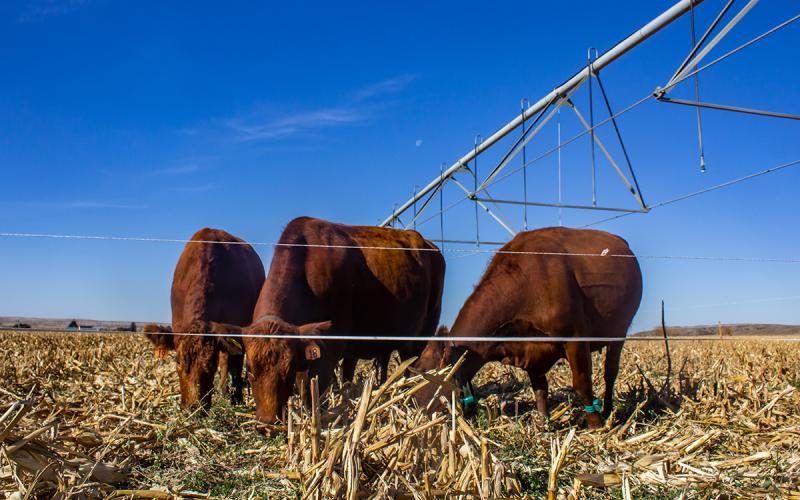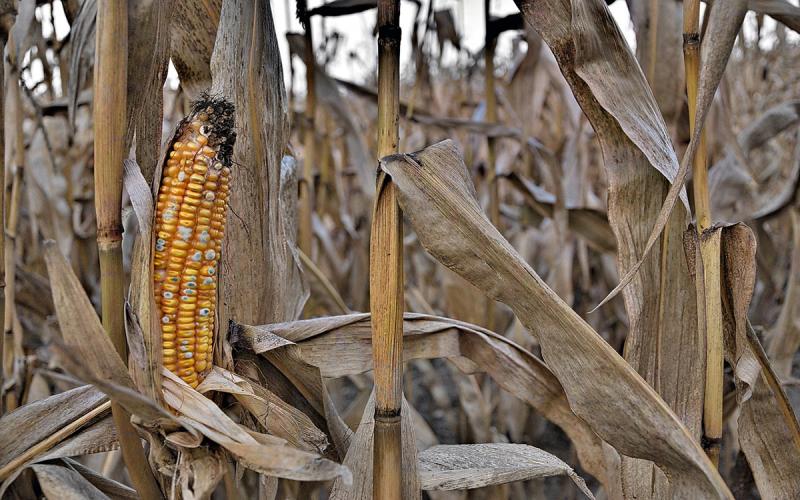Written collaboratively by Jeff Held and Amanda Peterson.
Many Midwest producers have limited options for their primary forage source this year and, must utilize ear-less corn stalks as silage for their in livestock feeding systems. Despite the lack of ears on stalks in some areas the resultant corn stover silage is still expected to contain 80% of expected level of energy under normal growing conditions.
Role in Diet
Corn silage is a fermented feedstuff providing great flexibility in ewe diet formulations during gestation and lactation. It is generally considered a very economical forage source for ruminant diets. Corn silage has been used in sheep diet formulations for many decades with great success. It is best suited to contribute energy (TDN or Calories) to a diet for a ewe. Large flocks, 200 head or more, often use corn silage in TMR rations fed in fence line feeding systems. In these feeding systems the corn silage is targeted to contribute 50% of the forage (as-fed basis) and blended with other types of forage, supplemental energy or protein feed sources to meet recommended animal nutrient needs. Sheep research studies have demonstrated that corn silage can contribute 100% of the dietary forage in a ewe’s diet.
| DM1 | CP 2 | ADF | NDF | TDN | NeM (Mcal/kg) |
NeL (Mcal/kg) |
NeG (Mcal/kg) |
Ca | P | Mg |
| 35% | 8.4% | 25% | 47% | 70% | 1.53 | 1.51 | .95 | .2% | .22% | .19 |
|
1Dry Matter |
||||||||||
When compared to high quality forages, such as alfalfa, corn silage is found to have lower levels of protein, minerals, and vitamins. Due to the limitations in the overall nutrient composition, corn silage is often blended with higher quality forages to meet nutritional requirements. Using corn silage as the entire source of forage or as a blend expects high palatability and to serve as the foundation of ewe diets formulated to achieve targeted levels of animal performance. Generally in sheep diets with high levels of corn silage supplemental sources of protein are needed, SBM or DDGS are the typical protein sources used to compliment corn silage based diets. Other imbalances found with corn silage based rations include level of minerals especially calcium, it is most practical to offer a commercial sheep mineral salt ad lib to compliment the diet formulation.
Health Considerations
Despite the higher level of nutrition management corn silage can serve a key role in providing flock nutrient needs, however the greatest concern for sheep producers with corn silage is focused on managing health risks. As with cattle the level of nitrate in the silage is important to have analyzed in addition for sheep another concern is with a bacterial related disease called listeriosis. Sheep are more susceptible than cattle to the disease listeriosis, often called “circling disease”. The specific type of listeria bacteria is commonly found in soil and subsequently is present in the corn silage. Properly fermented silage and good feeding management are critical for the use of silages in sheep diet formulation. When exposed to oxygen this bacteria population grows rapidly thus increasing the risk for listeriosis. Here are a few key points that directly or indirectly improve the feeding management of corn silage to lower the concern for listeriosis.
- Make sure adequate fermentation of the silage > 3 weeks after ensiling
- Avoid the crusty, moldy or spoiled silage from piles; bags reduce these potential risk factors
- Introduce silage gradually
- If possible mix cattle diets then sheep diets
- Mix rations immediately before feeding
- Never feed more corn silage than can be consumed daily
- Use blends of corn silage with complimentary forages
- Need adequate volume feed daily to keep corn silage fresh, oxygen limited. In upright silos 2 in. per day, bags and piles 1 ft minimum. Generally recommend at least 200 ewes or equivalent when feeding both sheep and cattle.
In Summary
In summary, corn silage even that harvested in drought stricken areas of the country can be an excellent ingredient in diet formulations for sheep. Yet the level of management and feed quality concerns must be addressed due to the condition called listeriosis.


